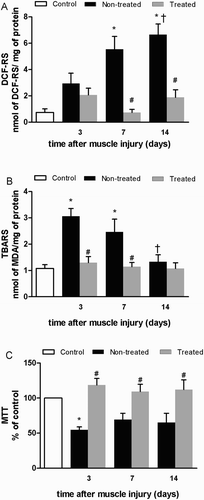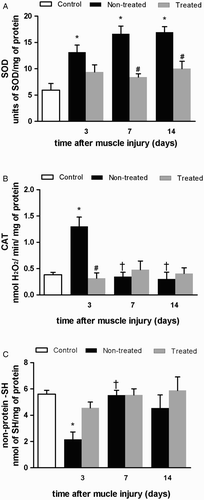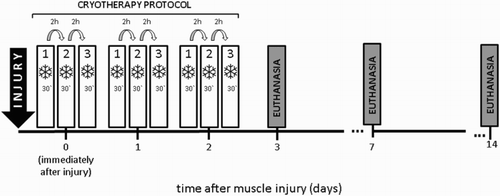Figures & data
Figure 2. Effects of multiple cryotherapy applications performed during the destruction phase following cryolesion in the tibialis anterior (TA) muscle of rats on markers of reactive species production, oxidative damage, and cell viability, respectively: (a) dichlorofluorescein reactive substances (DCF-RS) levels; (b) thiobarbituric acid reactive substances (TBARS) levels; (c) methyl thiazol tetrazolium (MTT) reduction levels. Data are expressed as mean ± SD. *Differences when compared to control group (P < 0.05); #differences between the treated and non-treated groups at the same time point (P < 0.05); †different from the value at 3 days after muscle injury (P < 0.05).

Figure 3. Effects of multiple cryotherapy applications performed within the destruction phase, following cryolesion in the tibialis anterior (TA) muscle of rats on antioxidant enzymatic and non-enzymatic detoxification mechanisms: (a) enzymatic activity of superoxide dismutase (SOD); (b) enzymatic activity of catalase (CAT); (c) non-protein thiol (–SH) levels. Data are expressed as mean ± SD. *Differences when compared to control group (P < 0.05); #differences between the treated and non-treated groups at the same time point (P < 0.05); †different from the value at 3 days after muscle injury (P < 0.05).


